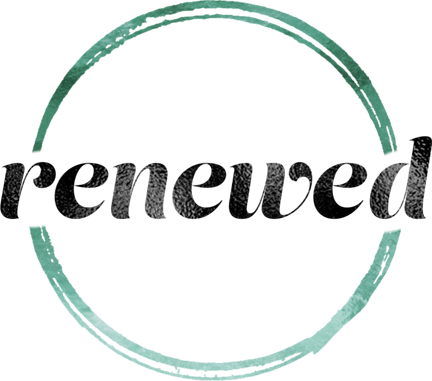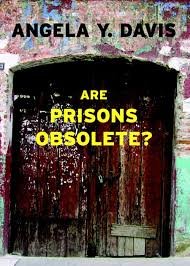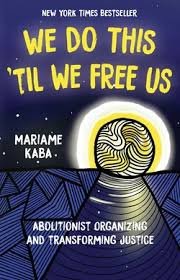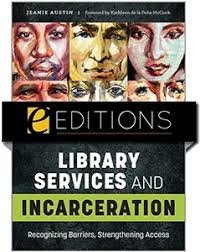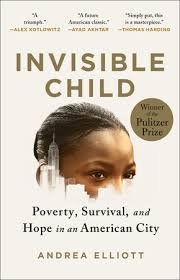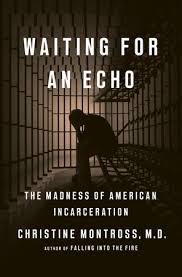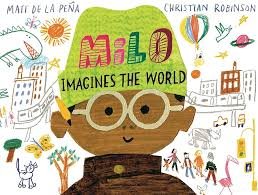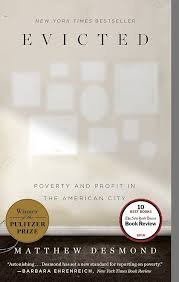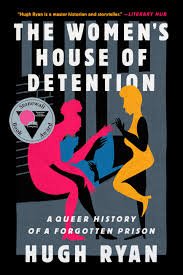Books to read and consider regarding library services and the PIC
Thinking about library services and incarceration? Here are some of the books that have helped me to parse out this bureaucratic tangle, in no particular order. Please note that the new ALA Standards for Library Services for the Incarcerated and Detained are almost here! But just as the PIC is vast, there are many angles to consider. This list is not at all comprehensive, but I hope it is a good point of reference for library and information workers who are wondering what is up on these fronts. For other information and resources relating to libraries and incarceration, please visit Library Services to the Justice Involved, where we've linked lots of good stuff like the Expanding Information Access GIS map and training videos.
Are Prisons Obsolete? By Angela Davis, 2003, Seven Stories Press
Concise, cutting insights into the prison industrial complex, or PIC. The following passage is especially apt to the place of public libraries in a world with fewer jails and prisons:
“The prison industrial complex is much more than the sum of all the jails and prisons in this country. It is a set of symbiotic relationships among correctional communities, transnational corporations, media conglomerates, guards, unions, and legislative and court agendas.
. . . Imagine a constellation of alternative strategies and institutions, with the ultimate aim of removing the prison from the social and ideological landscapes of our society. . . . Try to envision a continuum of alternatives to imprisonment–demilitarization of schools, revitalization of education at all levels, a health system that provides free physical and mental care to all, and a justice system based on reparation and reconciliation rather than retribution and vengeance.”
We Do This 'til We Free Us: Abolitionist Organizing and Transforming Justice, by Mariame Kaba, 2021, Haymarket Books
What is abolition? In brief, "PIC abolition is a positive project that focuses, in part, on building a society where it is possible to address harm without relying on structural forms of oppression or the violent systems that increase it." Kaba follows in the tradition of Davis to talk about the role of life-affirming institutions. These arguments also apply to our responsibility to "reduce contact between the public and the police." This will necessitate a dramatic shift from the "carceral logic," which dominates "nearly every government function, including those seemingly removed from prisons."
The Utopia of Rules: On Technology, Stupidity, and the Secret Joys of Bureaucracy, by David Graeber, 2015, Melville House
Do we protect things or people? Librarianship is bureaucratic by nature, meaning that we focus our energies on allocating resources. Even the most "benevolent bureaucracies," will spawn absurdities, and at the end of the day, are backed by the "threat of force." Graeber continues the logic and tradition of Max Weber to show us our true nature. This book is not specific to libraries or the PIC, though Graeber actually calls on the example of academic libraries to illustrate a key point about society and "lopsided systems of imagination."
Library Services and Incarceration: Recognizing Barriers, Strengthening Access, by Jeanie Austin, 2021, American Library Association
This book shows the lay of the land, including the history of library services for people impacted by incarceration, and all of the challenges that relate.
The New Jim Crow: Mass Incarceration in the Age of Colorblindness, by Michelle Alexander, 2012, The New Press
The PIC has been built out on racism and the socioeconomic problems we inherited from past generations, and as such, has disproportionately impacted people of color, especially black men. Rhetoric and laws that present as "tough on crime" reproduce and exacerbate harm, and have catalyzed the growth of the PIC.
Invisible Child: Poverty, Survival and Hope in an American City, by Andrea Elliott, 2022, Random House
I include this book on this list because it really goes to show the interlocking network of public services and the lack of a safety net for poor families which too often results in experiences with law enforcement and the PIC. Also, this narrative should be front of mind for children's and teen librarians, who could create welcoming and safe environments for families at the crossroads of the legal system and other social services.
Waiting for an Echo: The Madness of American Incarceration, by C. Montross, 2020, Penguin Press
This book also is not specific to libraries, but offers compelling arguments to show how "privilege and poverty and race are determining factors that suffuse and define our encounters with the criminal legal system."
Milo Imagines the World, by Matt de la Pena, illustrated by Christian Robison, 2021, G.P. Putnam,'s Sons Books for Young Readers
A picture book for all ages that goes to show we're not alone, and thereby may help to break down walls and barriers to imagination.
The Short and Tragic Life of Robert Peace, by Jeff Hobbs, 2015, Scribner
I hate to burst our bubble, but libraries, or education, are no silver bullet. Like Invisible Child, this book offers a very personal account to the impacts of societal shortcomings and politics. I will never not think about Robert Peace's mother, returning to work the day after hearing that he had been killed.
Just Mercy: A Story of Justice and Redemption, by Bryan Stevenson, 2018, One World
May I suggest listening to this one as an audiobook? But especially, the chapter about women on Death Row stands alone.
Evicted: Poverty and Profit in the American City, by Matthew Desmond, 2017, Crown
Important narrative journalism, especially as cities move to criminalize homelessness, and insofar as the housing crisis and poverty connect to the PIC.
The Women's House of Detention: A queer History of a Forgotten Prison, by Hugh Ryan, 2022, Bold Type Books
Kind of a difficult read, but like Poverty or Invisible Child, really great journalism, which positions an infamous jail alongside the women who were incarcerated there and the surrounding community. See especially the chapter about the Stonewall Riot and the House of D.
